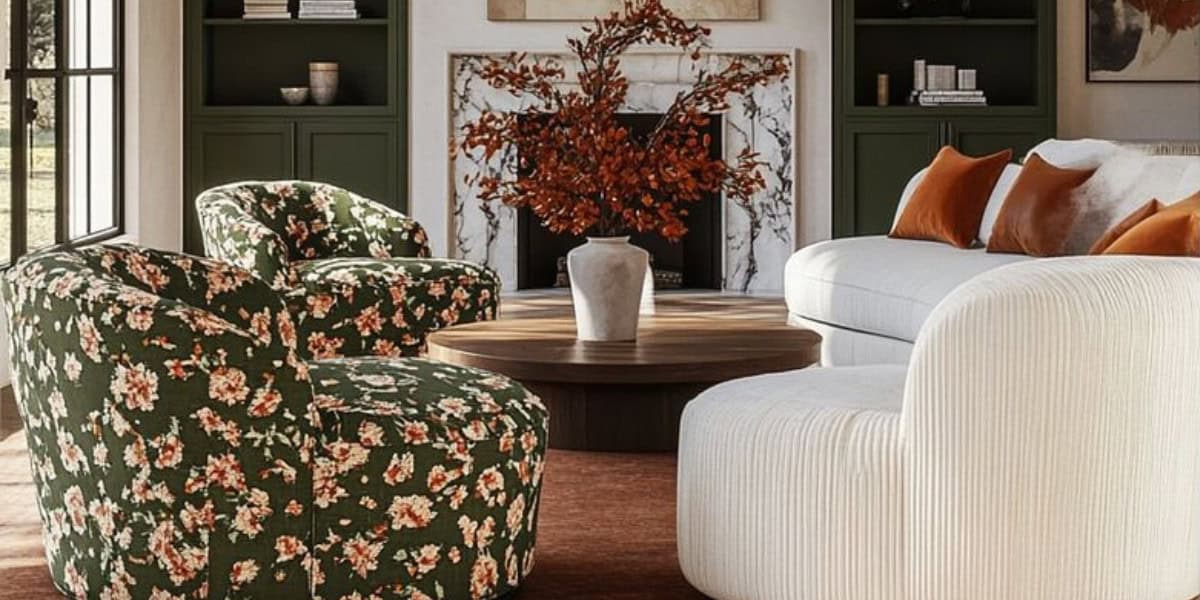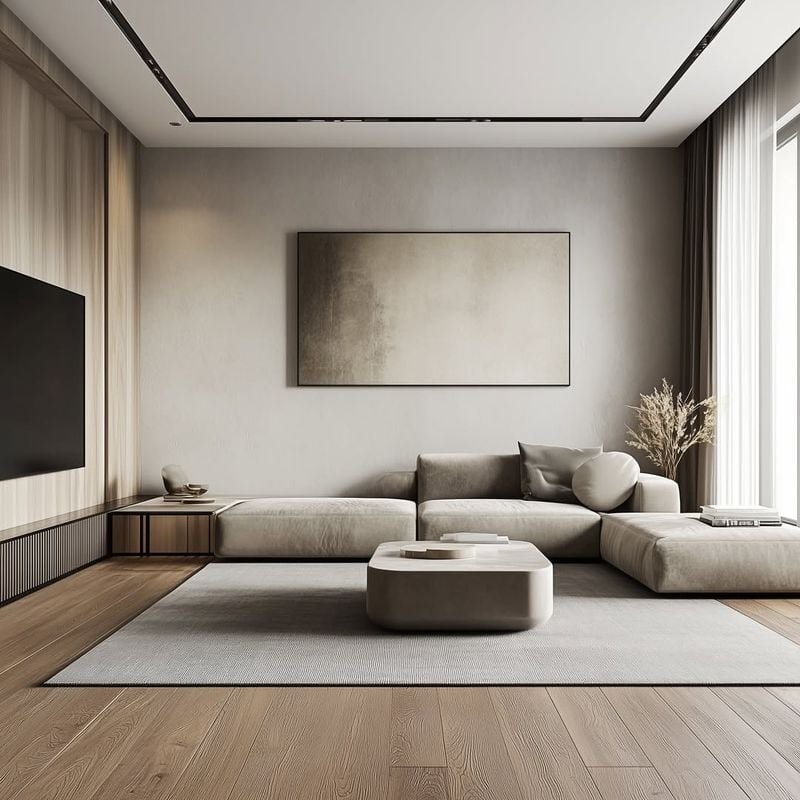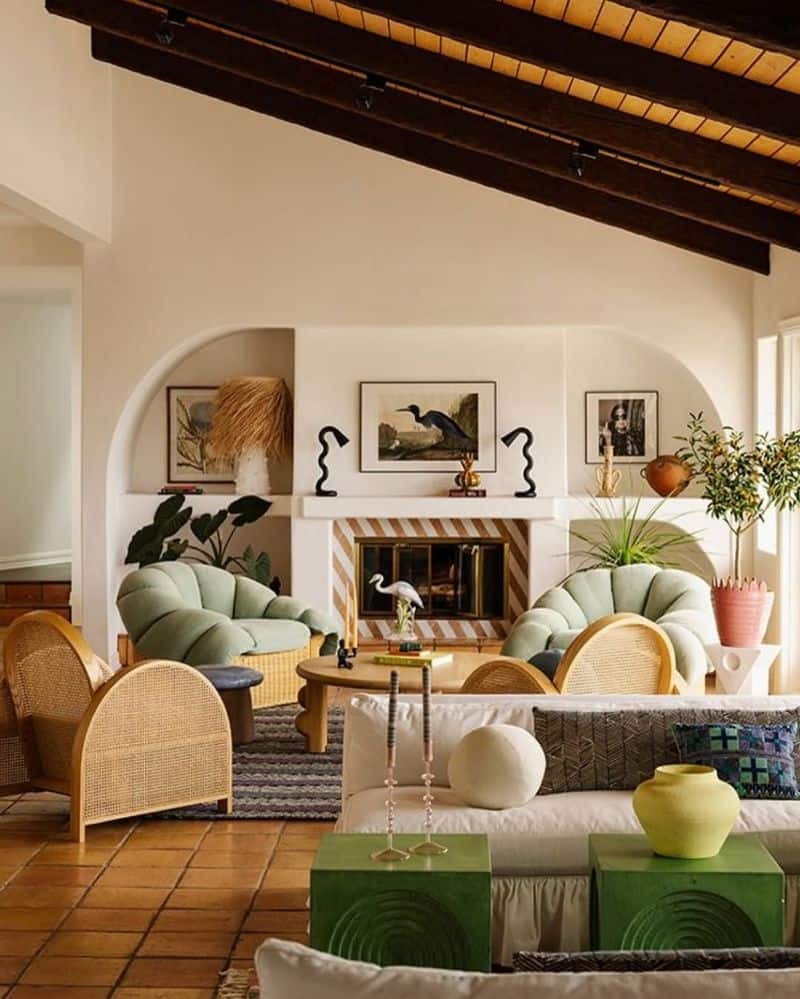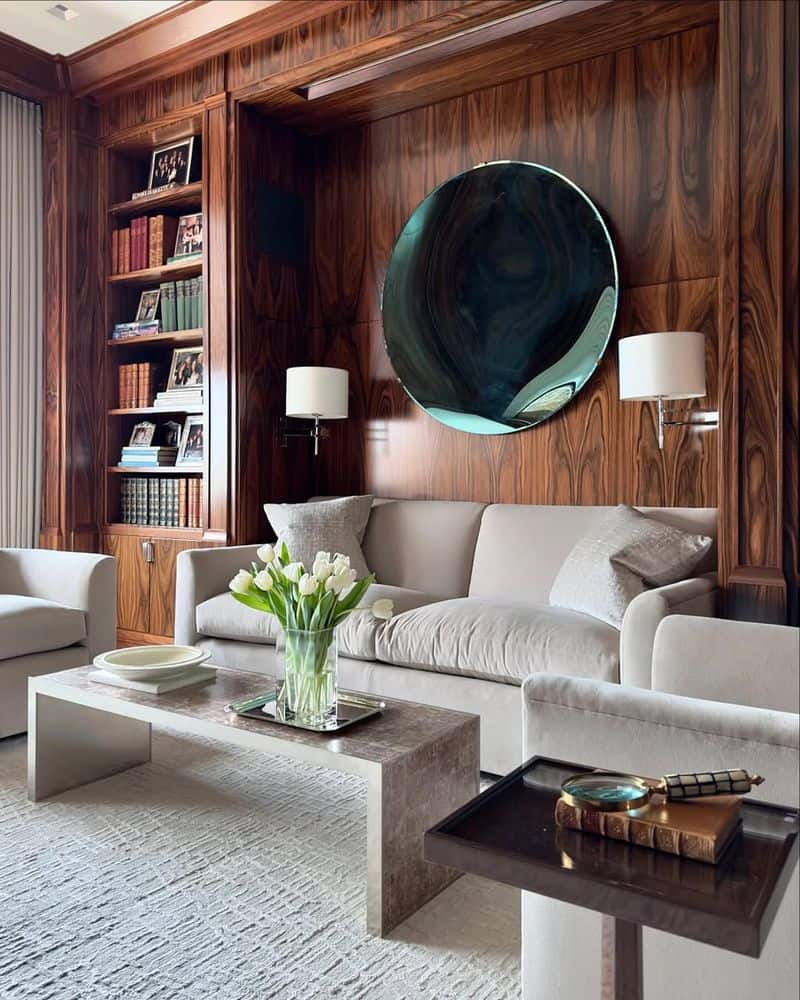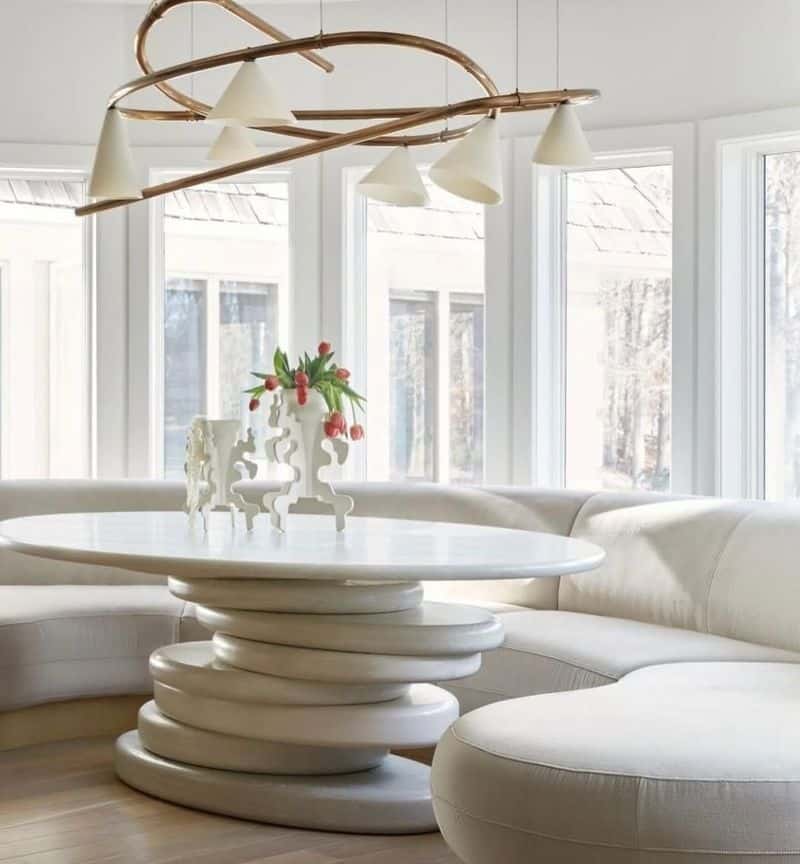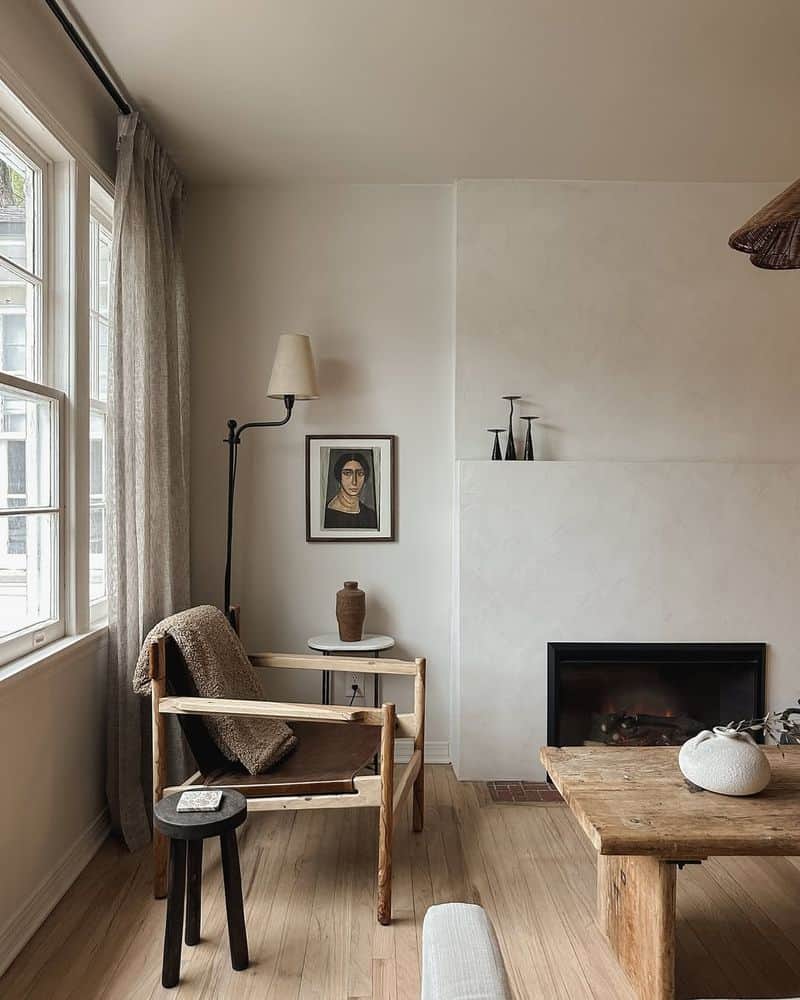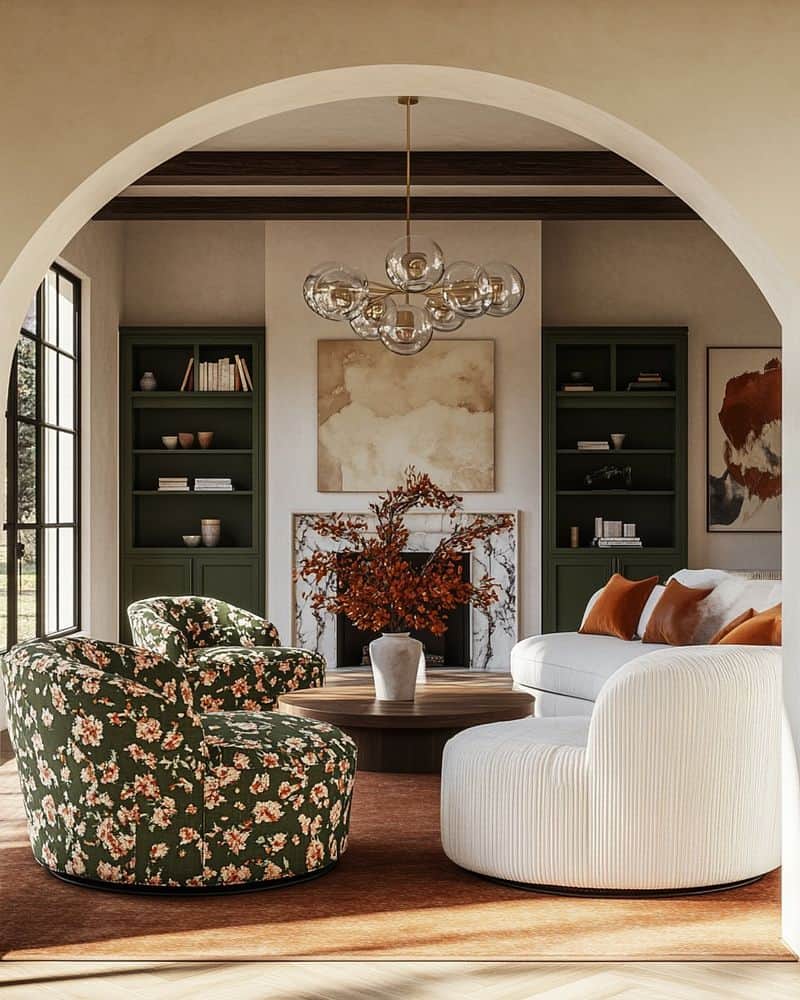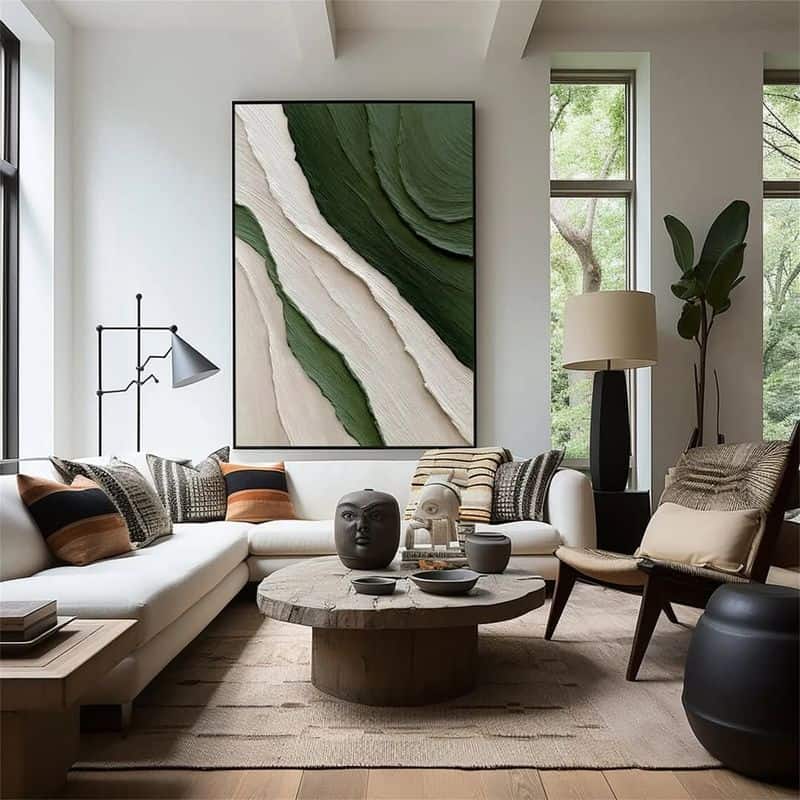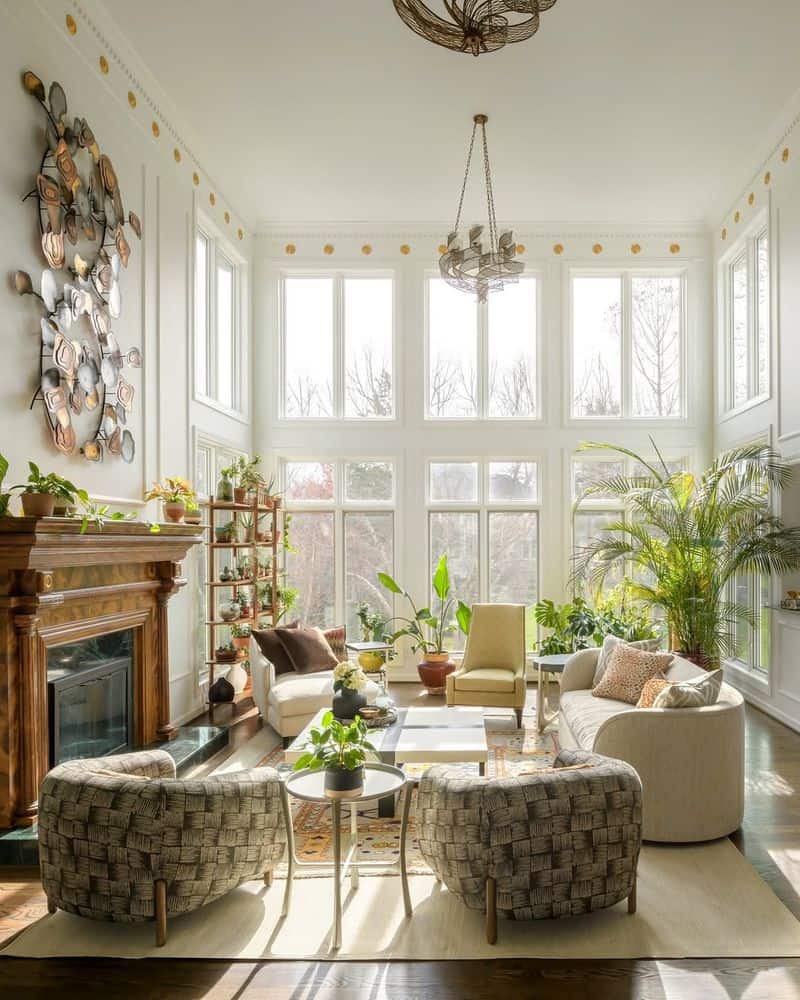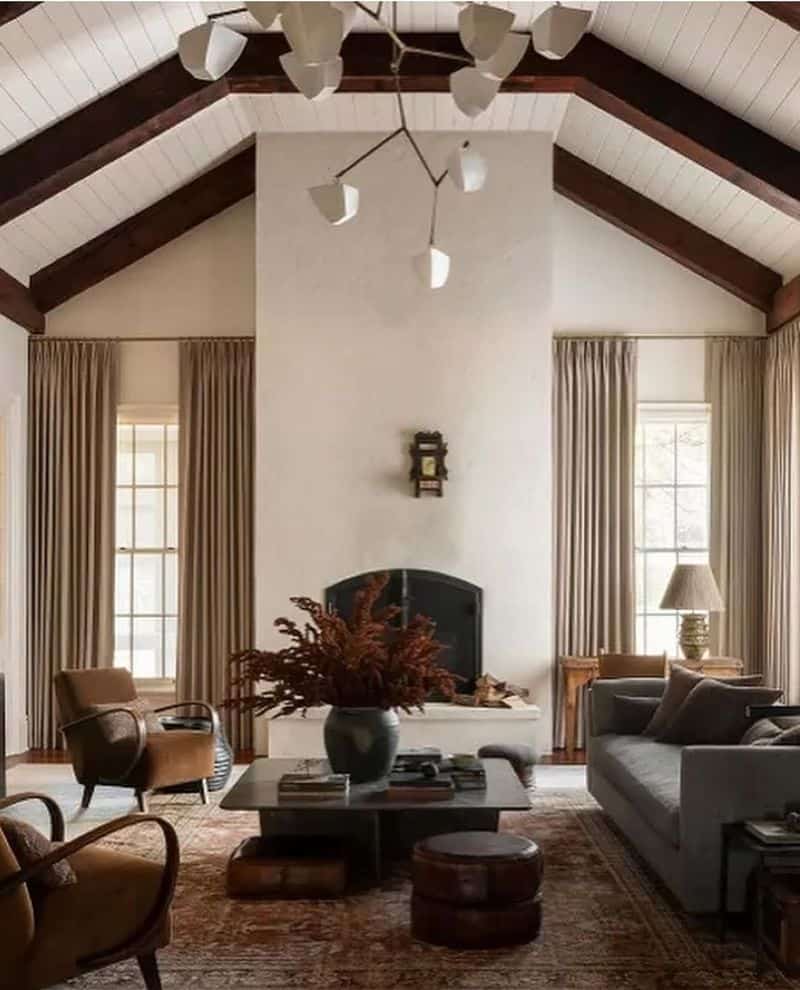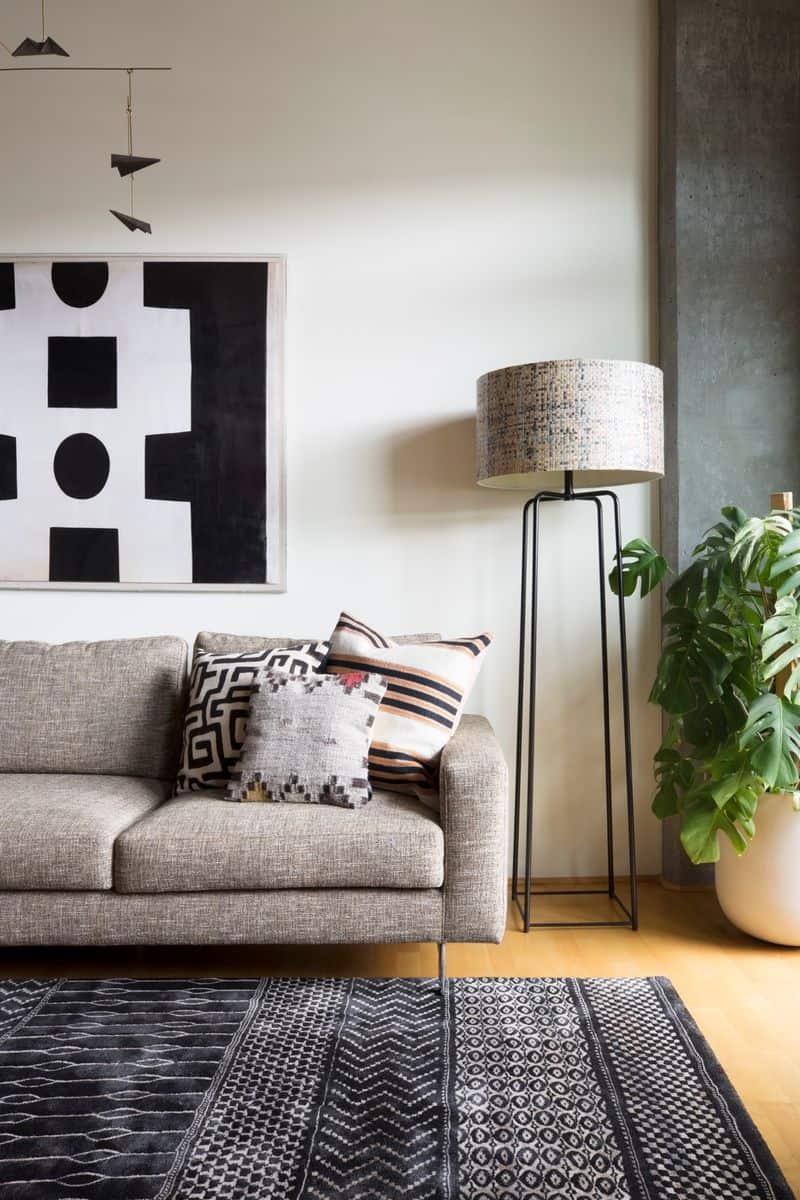Decorating your home like a pro is within your grasp, even if your only design experience is rearranging your sock drawer.
With these 10 insights, you’ll transform any space into a haven of style, comfort, and personality.
Let’s explore how to channel your inner designer without losing your mind or your savings.
1. Establish a Cohesive Color Palette
Choosing the right colors is like picking ice cream flavors – too many can lead to chaos. Stick to two or three and you’ll create harmony, not a visual sundae.
The goal is to avoid a circus tent vibe while maintaining some flair.
You can experiment with different shades, like matching light blue walls with navy curtains. This approach is kinder on the eyes and makes your space feel put together.
Remember, cohesive doesn’t mean boring; it just means your eyes should feel like they’re at a spa, not a rock concert.
2. Incorporate a Mix of Textures
Texture is the silent hero of interior decor. Mixing textures is like making a good soup – you need variety to keep it interesting. Combine soft throws with wooden furniture and metallic accents.
This approach prevents your room from looking as flat as a pancake. Texture adds depth, making your home feel as inviting as a warm hug.
Try combining a plush rug with a leather couch and a glass coffee table. The diverse materials play off each other, creating a balanced, delightful space. Don’t be afraid to mix it up and experiment.
3. Create a Focal Point
Every room needs a star performer—a focal point that draws the eye and anchors the space. Think of it like casting the lead in your home decor play.
It could be a bold piece of art, a unique piece of furniture, or a stunning view. This trick helps in organizing the room’s design around one central element, giving it a sense of purpose.
Remember, your focal point should not be a distraction but rather an intriguing feature that complements the rest of your decor without overshadowing it.
4. Use Proper Lighting
Lighting can transform a space faster than a magician with a rabbit. Proper lighting techniques can make or break your room’s ambiance.
Layering light is key—use a mix of overhead, task, and ambient lighting to create depth. This approach allows you to control the mood and functionality of your spaces.
Consider dimmers to adjust the intensity based on the time of day or occasion. Remember, bad lighting is like bad coffee; it leaves a bitter taste in your mouth. Good lighting, however, makes everything look better.
5. Mix High and Low-End Pieces
Marrying high-end pieces with budget finds is like pairing a designer jacket with thrift store jeans. It’s about balance and creating a space that feels unique without emptying your wallet.
Incorporate one or two investment pieces that you love, then balance them with more affordable items. This mix will add character and depth to your rooms.
A designer lamp on a budget-friendly table can work wonders. This approach not only saves money but also showcases your personality and creativity. So go ahead, blend the thrifty with the opulent.
6. Incorporate Personal Touches
Your home should feel like a reflection of you, not just a page from a catalog. Personal touches make a house a home.
Incorporate items that tell your story—family photos, travel souvenirs, or unique art pieces.
These elements add warmth and character that can’t be bought. It’s like adding your own signature to the space.
These personal touches don’t just fill space; they create a connection to your environment. Let your personality shine through your decor choices, making your home uniquely yours.
7. Pay Attention to Scale and Proportion
Imagine wearing clown shoes with a fitted suit. That’s what improper scale and proportion look like in decor. Each piece should fit the space and complement the others.
A large sofa in a small room can overwhelm, while tiny artwork on a large wall can look lost. It’s all about balance and ensuring each element is in harmony with the rest.
Consider the size and placement of furniture and decor to create a cohesive look.
When done right, scale and proportion make your room feel balanced and visually pleasing.
8. Add Greenery
Plants are like the sprinkles on a cupcake – they add life and color. Bringing greenery into your home can boost mood and air quality.
Choose a variety of plants to add different textures and shades of green. From small succulents to large potted palms, these natural elements can transform your space.
Plants also work as natural air purifiers and can soften the harsh lines of furniture. Incorporating greenery is a simple way to invite nature inside, creating a serene and lively environment.
9. Avoid Overmatching
Overmatching is the decor equivalent of wearing a denim jumpsuit with denim shoes. It’s tempting to match everything, but too much can feel contrived.
Mix and match styles, colors, and patterns to create a more dynamic and interesting space. This approach adds depth and personality to your decor.
Avoid the urge to match every element exactly; instead, aim for coordination. A cohesive yet varied approach ensures your home feels inviting and thoughtfully curated without becoming monotonous.
10. Layer with Rugs and Upholstery
Rugs and upholstery are like the accessories of a well-dressed room. Layering them can add warmth, texture, and color, transforming your home into a cozy retreat.
Start with a large area rug and layer smaller rugs on top. Mix patterns and materials for added interest.
Consider upholstered furniture with varied textures that invite you to sit and stay awhile. This technique not only adds comfort but also visual appeal.
Layering these elements creates a sense of depth and luxury, making your space feel complete.

